Ceramic has been a favorite choice for interior decorators and architects in the hospitality industry. Its versatility, durability and unique aesthetics make it an ideal choice for a variety of applications in the hospitality industry. Below, we will explore how ceramic tile is used in hotels, specifically in their reception areas, and look at the benefits it brings and how its design and use is perfect for this type of project.
Its durability and resistance to scratches, bumps and stains makes it ideal for high-traffic spaces such as a hotel reception. Its non-porous surface makes it hygienic and easy to clean, maintaining its impeccable appearance for many years, making it look as good as the first day, even with high foot traffic. In addition, it can also contribute to thermal comfort, as it has the ability to store and release heat, helping to maintain a comfortable temperature.
In addition, ceramics can be used in different ways. For example, Colorker's Kristalus collection can cover the floor to create a solid and attractive base, or it can be used on the walls or reception counter to create a visual focal point. It can also be combined with other materials, such as wood or metal, to create a contrast of textures and styles.
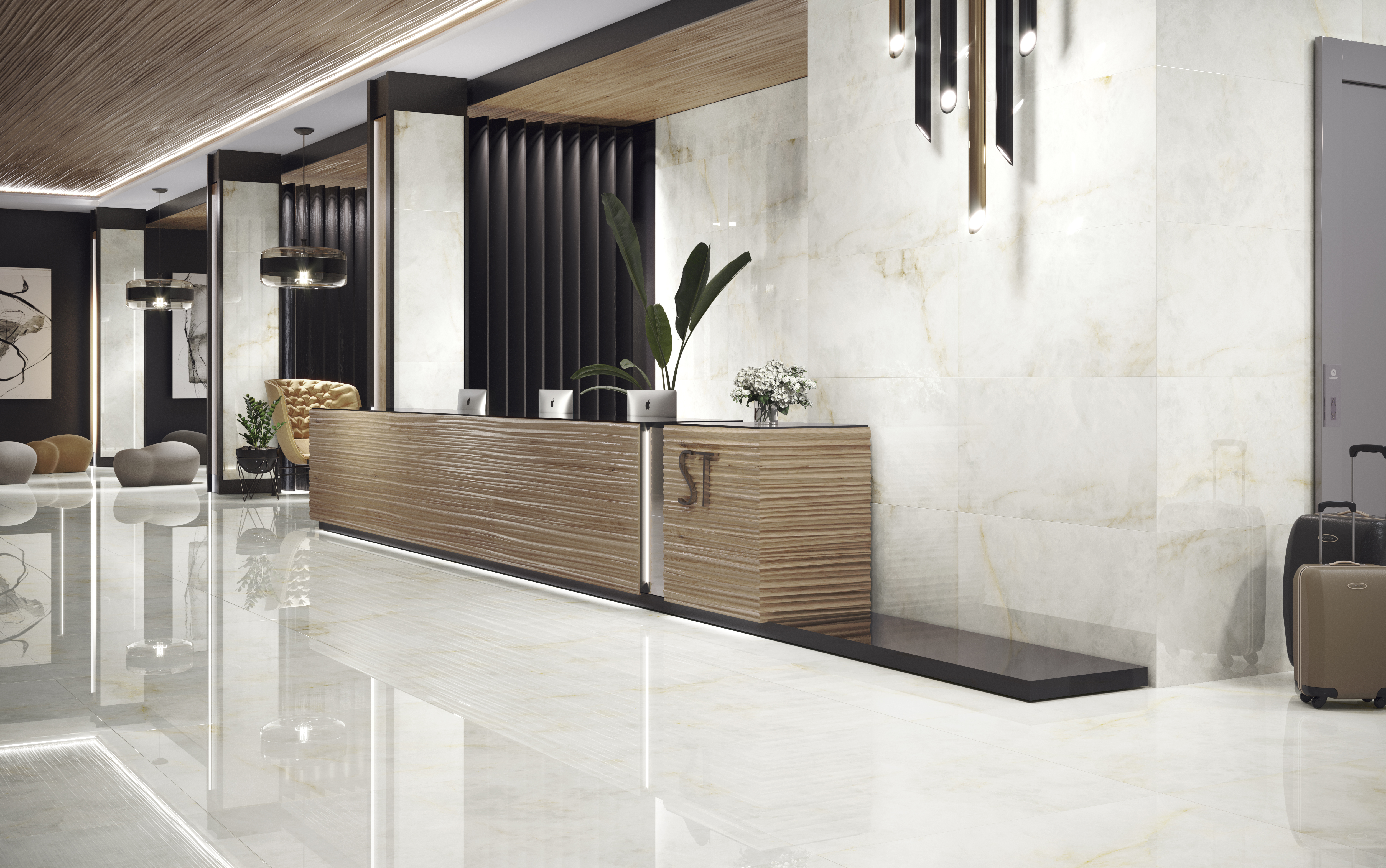 Kristalus White 60x120 y 120x120
Kristalus White 60x120 y 120x120
El diseño de cerámica ha evolucionado enormemente en las últimas décadas. Hoy en día, se recrea una amplia gama de estilos y texturas, desde el aspecto de la madera hasta el mármol, el cemento y más. Esto permite a los hoteles elegir diseños que se adapten perfectamente a su estética deseada. Además, las innovaciones en la tecnología de impresión digital permiten personalizar los diseños cerámicos, creando oportunidades para la creación de espacios únicos y personalizados.
Receptions: Making a Style Statement
First impressions count, and nowhere is this truer than at a hotel reception desk. Here, ceramics play a pivotal role in creating a lasting first impression. From sleek porcelain tile floors to imposing reception counters, these elements add a touch of sophistication and style.
In the hospitality industry, the front desk is the opportunity to capture the attention of visitors and create a positive, lasting image that will remain in their minds. The design of a hotel's reception area plays a key role in this process, and the choice of materials and colors can have a significant impact on guests' perceptions.
The Charm of Hotel Receptions with Light Tone Ceramics
Ceramics in light shades have become a popular choice for hotel receptions, bringing an elegant, bright and welcoming look. In this blog post, we will explore how the use of ceramics in light shades can enhance the design of hotel receptions.
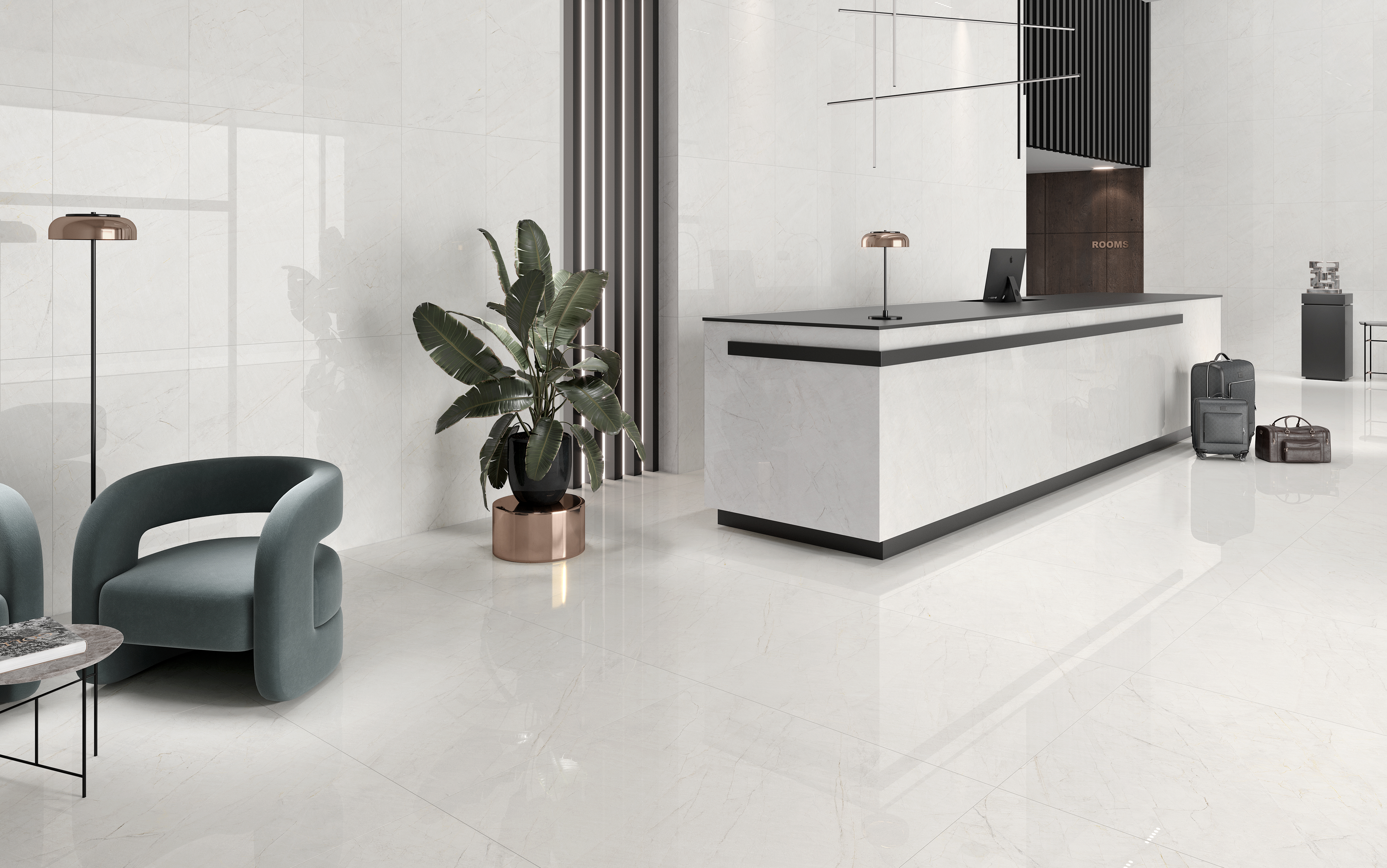
Sky White 60x120 y 120x120
The use of light-toned ceramics adds an air of elegance and modernity to the space. Light tones, such as the white of Colorker's Sky or Hudson collection, bring a sense of spaciousness and brightness, creating a welcoming and pleasant atmosphere. This neutral color palette also provides a perfect backdrop to highlight other design elements, such as furniture, artwork or plants.
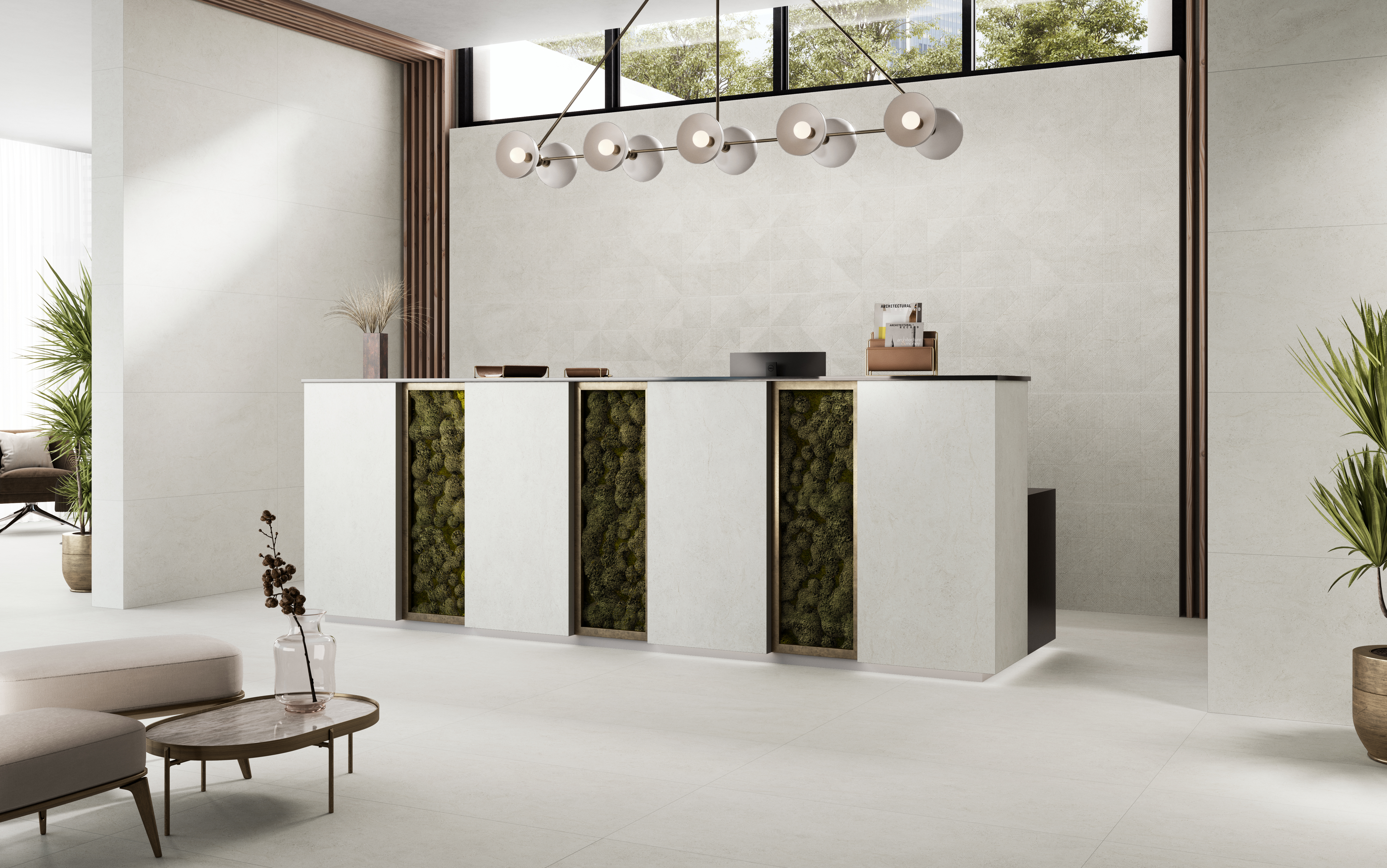 Hudson White 59,5x119,2 | Oneida White 9,5x119,2
Hudson White 59,5x119,2 | Oneida White 9,5x119,2
In addition, the light tones of the ceramics reflect light efficiently, which can help brighten the reception area and give a sense of space and cleanliness. This aspect is particularly useful in hotels located in areas with limited natural light or smaller interior spaces.
The use of light-toned ceramics can also help create a sense of harmony and balance in the hotel reception area. A clear example is Colorker's Da Vinci and Solange collections in White and Cream. These soft, neutral tones can easily blend in with the surroundings, providing a smooth transition between indoors and outdoors. This is particularly effective in hotels located in areas of natural beauty, where the interior design can reflect and complement the exterior landscape.
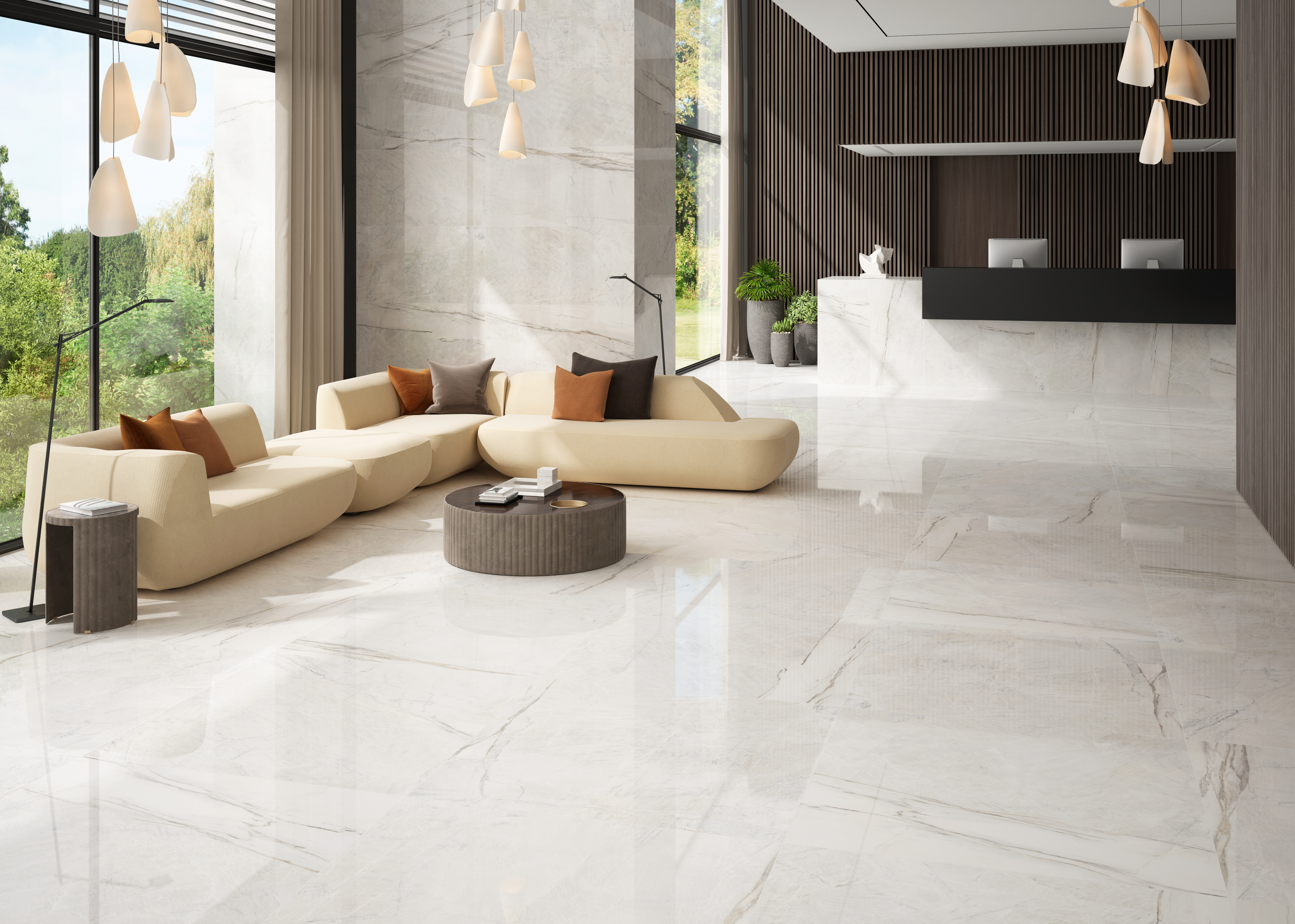
Da Vinci White 60x120 y 120x120
The Impact of Hotel Receptions with Dark Tone Ceramics
Recently, ceramics in dark tones have emerged as a trend in hotel reception design, providing an aesthetic that is sleek, sophisticated and high impact. Colorker's Sonar series fits nicely into this trend, focusing on an industrial but totally revamped decor. Inspired by metals, this collection takes us to rust colors, a current trend that evokes metropolitan environments.
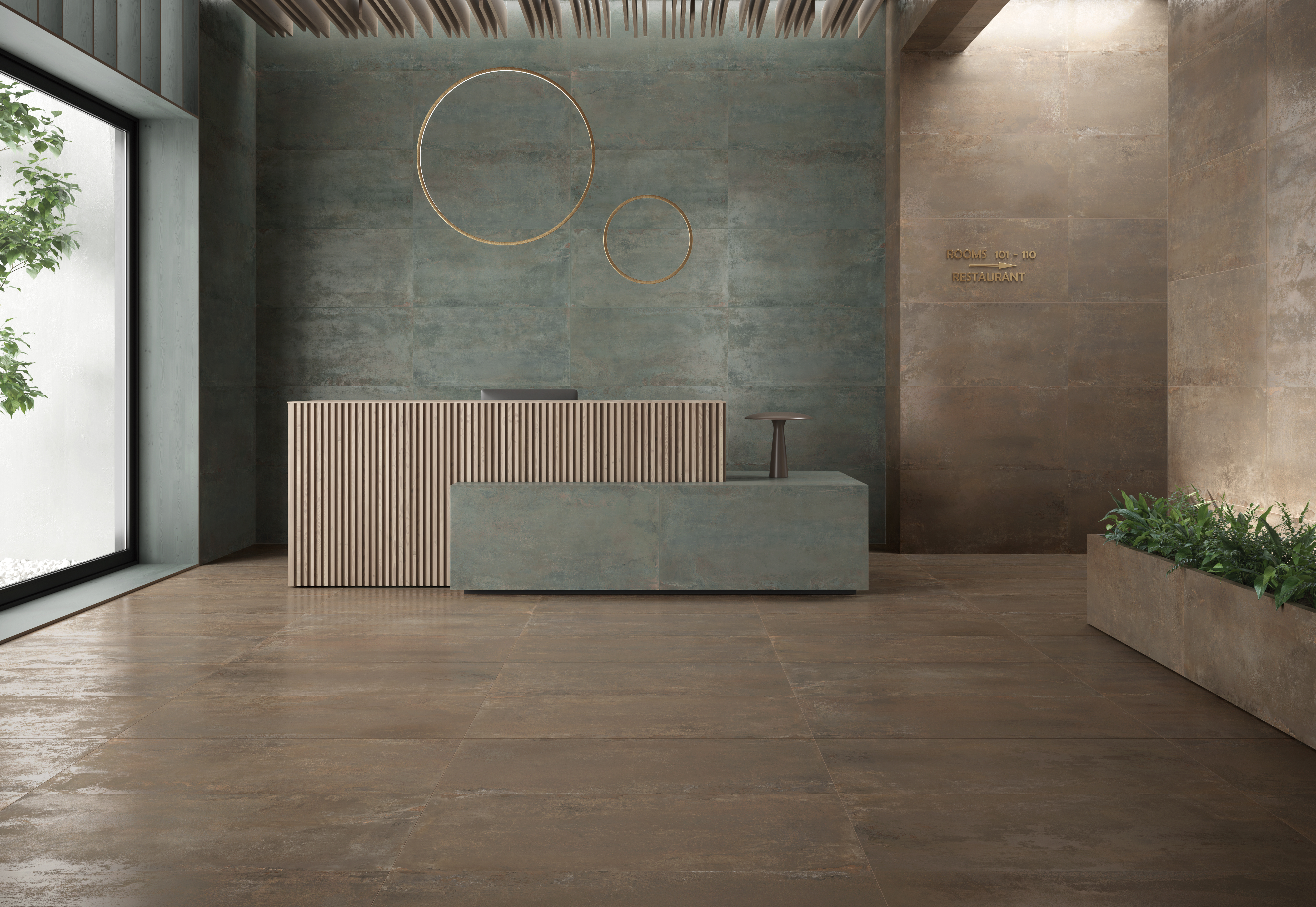 Sonar Copper 59,5x119,2 | Sonar Esmerald 59,5x119,2
Sonar Copper 59,5x119,2 | Sonar Esmerald 59,5x119,2
Ceramics in dark tones have an intrinsically stunning quality. Whether it's a deep gray or rich brown, these colors can add depth and sophistication to a hotel reception area. Dark tones provide a strong contrast to the lighter elements of the space, which can enhance the overall look and create a dramatic focal point.
In addition, ceramics in dark tones often have a luxurious quality that can enhance the perception of elegance and quality in hotel reception design. This material can create a visual statement, establishing an impression of high quality right from the start.
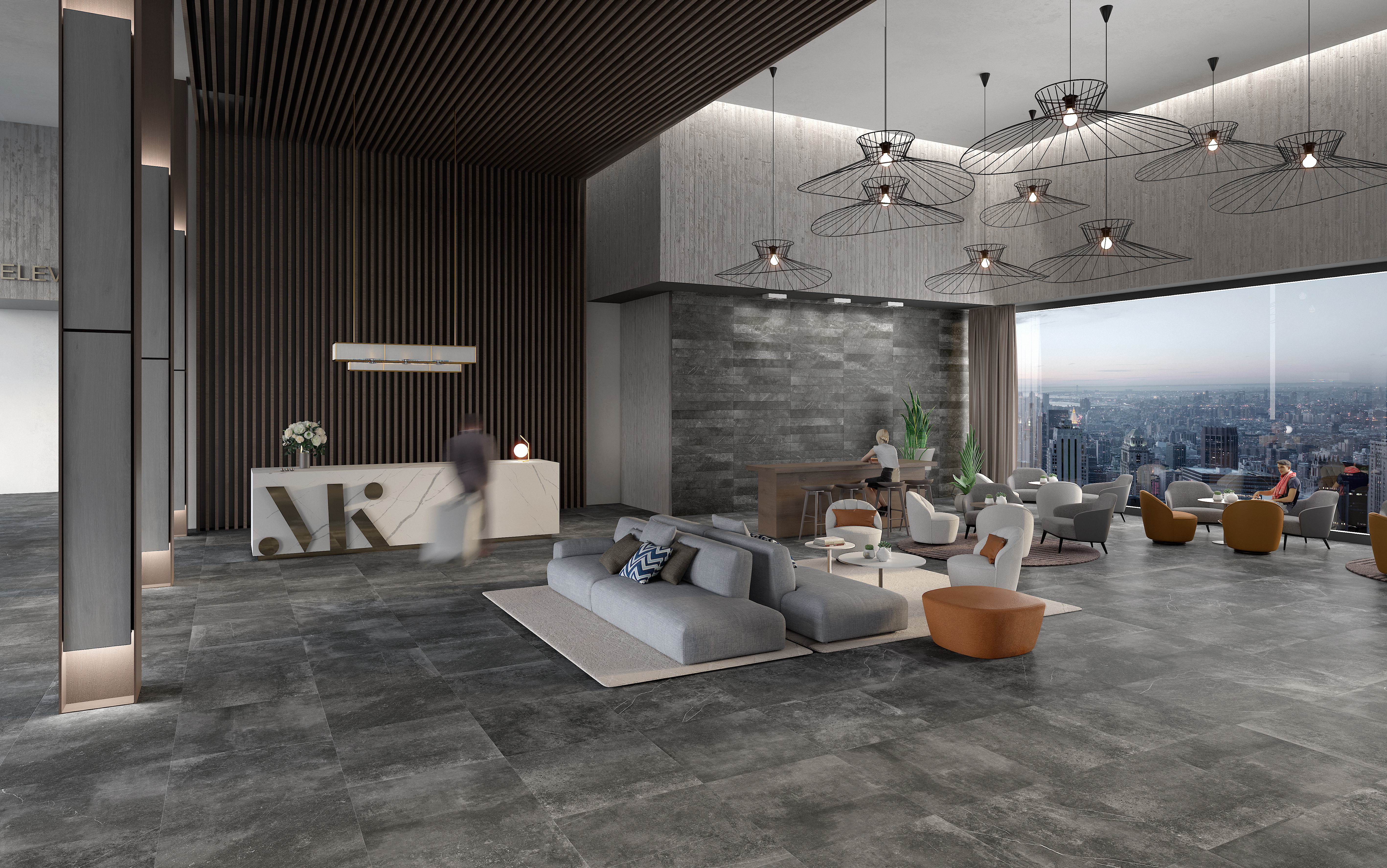 Kainos Shadow 90x90 | Estratos Shadow 59,5x119,2
Kainos Shadow 90x90 | Estratos Shadow 59,5x119,2
The use of ceramics in dark tones can be particularly effective when used in combination with other design features. For example, it can be a stunning contrast to light wood or metallic elements, or it can complement and enhance design elements in similar tones. It can also be effective in highlighting architectural details or art pieces, creating a striking backdrop.
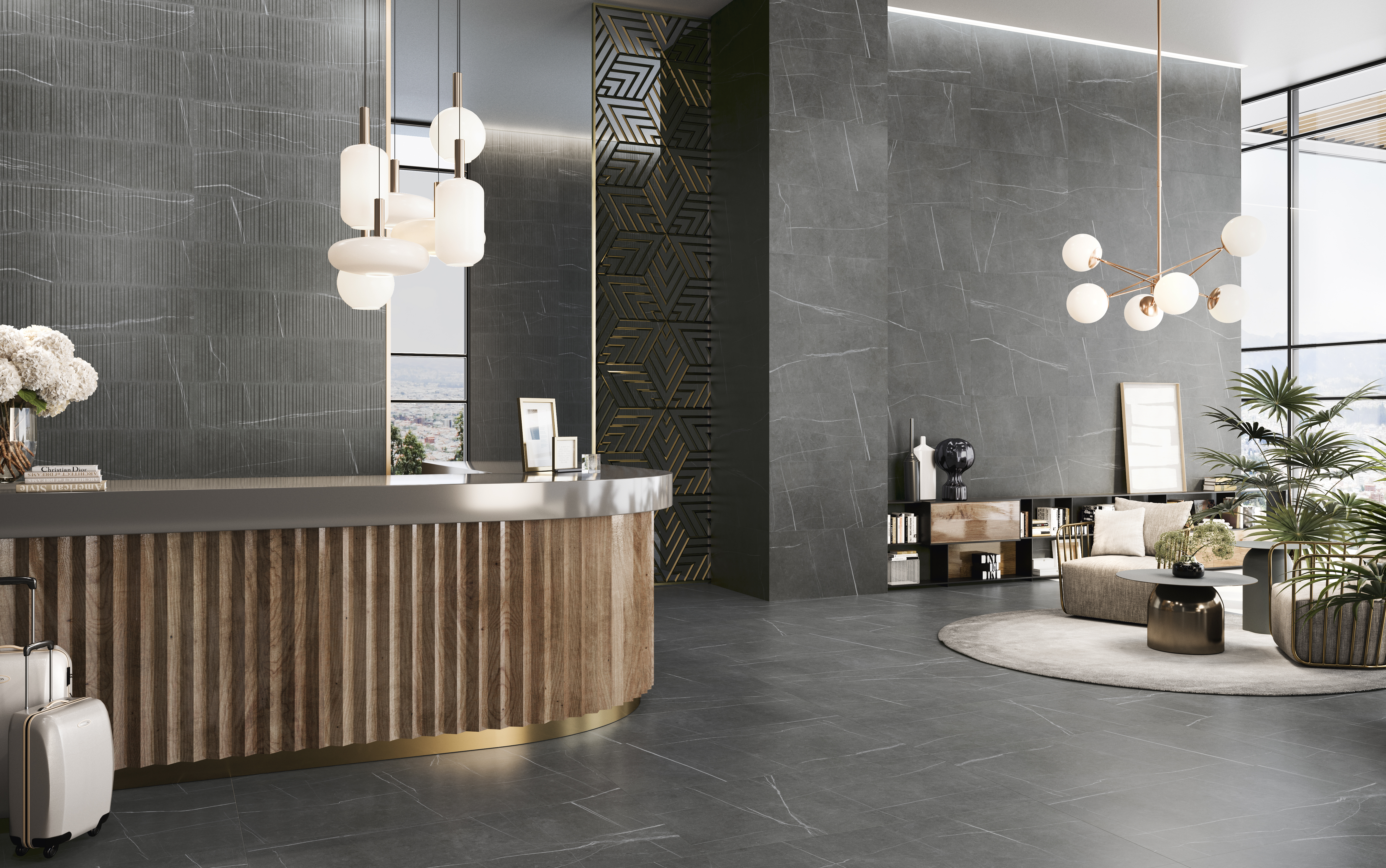
Nomade Noir 59,5x119,2 | Parallelo Noir 59,5x119,2
Colorker's Kainos and Nomade collections are a perfect fit and will set off not only the rest of the hotel's reception décor, but the entire reception as a whole will stand out beautifully, providing the elegance and presence that every hotel expects its guests to perceive.
Colorker ceramic is an incredibly versatile material for the hospitality industry, offering a combination of durability, functionality and beauty that is hard to beat. And with constant innovations in ceramic design and manufacturing, it is sure to remain a top choice among architects, designers and interior designers who want to achieve cutting-edge projects.